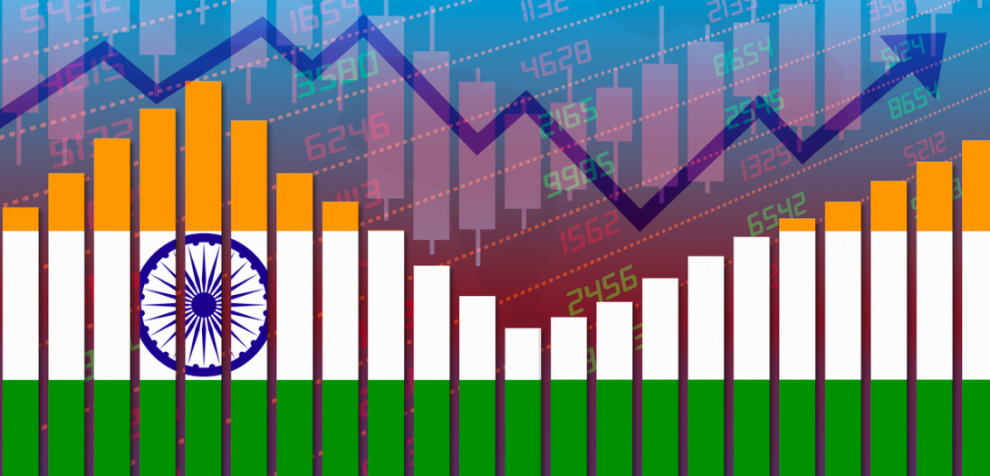The economy of India was caught on fire in the Monthly Economic Review May 2025, this made India to attain the real growth of 6.5 percent in GDP during FY25, despite global risks in persistence. The report will be issued on June 27 2025, by the department of economic affairs, ministry of finance and highlights the three pillars of India as a stable country to be lowering of inflation, high foreign exchange reserves, and strong internal demand. All this in spite of world head winds keeps India as the fastest growing major economy in the world.
The GDP of India was estimated by the Ministry of Statistics and Programme Implementation and further evaluated by the Finance Ministry at 6.5% growth rate of FY25. The report projects an economic activity until May 2025. GDP growth was high at 7.4% in a powerhouse second-half of FY25 with the fourth-quarter registering a record high growth. Domestic demand, particularly by rural households augured well with good agricultural production and above normal monsoon rains which started on May 24, 2025, the earliest since the year 2009. The Reserve bank of India(RBI) and other economists such as Crisil and Deloitte provided figures and estimations, which underscore the stable economic growth in India.
The economic growth is evident in rural and urban India. On the farm front, an all-time high agricultural growth rate has elevated foodgrain production to 330.9 million tonnes in FY25, a 4.8 per cent growth over the last 12 months. The low-level increase in wages in cities has been countered by the reduction in inflation and tax subsidy, included in the Union Budget 2025-26, thereby maintaining consumption. By June 13, 2025, the foreign exchange reserves of India were worth 699 billion, which translates to an import cover of eleven and a half months and macroeconomic stability. Commenting on the report, it is stated that the defense infrastructure propositions, railways, and road transport infrastructure projects are the key vectors of capital expenditure especially in Maharashtra, Tamil Nadu, and Uttar Pradesh being major citadels of manufacturing and service industries.
The economy of India is robust as the government has been swift in its action, household consumption is increasing and the trade with the other part of the world is maintaining. Infrastructure has been given the first priority by the Finance Ministry headed by the Union Finance Minister Nirmala Sitharaman. In the Union Budget 2025-26, capital expenditure increased by 10.1 per cent to Rs. 11.21 lakh crore (US$129 billion).
In the same time, the Reserve Bank of India (RBI) reduced the repo rate by 25 basis-point in April 2025 to 6 percent. This was beneficial to growth and inflation was controlled. The current level of inflation which stood at 2.82 percent in May 2025 the lowest in six years is attributed to reduced food and energy prices and a good agricultural production. Support by the government in food supply chain also came in handy.
Services, which have a growth to 7.2%, and manufacturing with the help of Make in India and the production linked incentive (PLI) scheme, have played an important role. The high GST collections to the tune of Rs. 2.36 lakh crore (US$27.62 billion) in April 2025 and a 23 percent increase in the e-way bills demonstrates economic activity in the country.
A set of coordinated actions as well as good economic conditions led to the restoration of economic stability. Most new spending (75 percent) by the government was devoted to defense, railways and road transport. Reserve Bank of India maintained a tight monetary policy and kept the inflation relatively lower; retail inflation decreased to 3.16 percent in April 2025, within the 2-6 percent target range. On the local front there was enhanced seeding and increased reservoir levels, which increased the incomes of farmers in the rural regions. The expanding city provided better disposable income to support shopping in the urban regions and similarly declining price increase improved household expenditure.
The flows of foreign direct investment (FDI) were high with the flow increasing to 18.98 billion between October and December 2024, whereas the exports increased. But the gain in imports was even greater increasing the deficit in trade. The external sector was functioning well due to the fact that services exports outweighed the imports and FDI continued to flood in. Finance Ministry and RBI collaborated with the private sector in order to ensure that these gains remained in existence.
Although the situation was menacing due to geopolitical tensions, trade concerns and potential tariffs, the forecast remained optimistic. Finance Ministry pointed out that the export growth on products like chemicals and textile as well as electronics is likely to be damped by U.S. trade policies and regional wrangles. Nevertheless, this should be alleviated by the fact that India is involved in 14 free trade agreements and potential negotiations with the United States, Oman, Peru and the European Union.
Domestically, Indian economy has good fundamentals: an excellent banking system, good corporate balance sheets, stable employment market. However, this, coupled with the fact that RBI and Crisil predict a growth rate of 6.5 percent in FY26, indicates that India can further continue on its course without having to lose control on the aspect of inflation and the fear of global shocks.











Add Comment